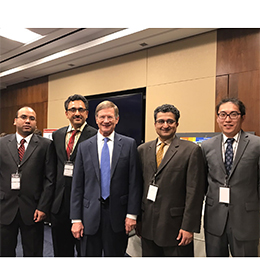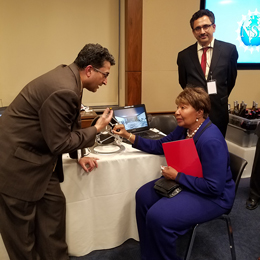
Prof Shares Research at Capitol Hill
Dr. Balakrishnan Prabhakaran, professor of computer science, and a team of researchers recently shared their work with U.S. congress and senate members in Washington D.C.
With advanced 3D modeling, virtual and mixed reality and networking technologies, Prabhakaran has developed remote physical therapy options, allowing veterans to receive necessary care even when a doctor can’t be on site.
“We’re building the next generation of patient care as both doctor and patient,” Prabhakaran said. “ With 3D immersive tele-rehabilitation, patients can push down on a device and a doctor’s device in another location moves with the same force, as if the patient were physically pressing the doctor’s hand.”

The team of Jonsson School researchers made the trip to Capitol Hill after an invite from the National Science Foundation (NSF) and the Coalition for National Science Funding (CNSF). At the D.C. event, titled “The Arc of Science: Research to Results,” scientists from around the nation showcased their NSF-funded research that provides services to American citizens, businesses and government.
The UT Dallas team gave demonstrations of their project to a number of congress members, including Lamar Smith and Eddie Bernice Johnson, both who represent the state of Texas.

In collaboration with a faculty and students from UT Southwestern Medical Center, Prabhakaran recently finished a series of patient trials-physicians came to UT Dallas and worked in a virtual space with patients from the Dallas Veterans Affairs Medical Center. Fifteen patients with different types of upper-arm impairments participated in the trials.
“The 3D models of users are captured by 3D Kinect cameras, and users can feel each other’s movement in real-time using a haptic device, which is a piece of equipment with resistance motors that apply force, vibration or motion to give feedback,” added Prahba.
Research on the 3D immersive tele-rehabilitation system has received over $2.7 Million over seven years from the National Science Foundation.

Congresswoman Eddie Bernice Johnson (D-TX) discussing the rehabilitation system: The project team was delighted to learn that Ms. Johnson was the Chief Psychiatric Nurse at the Dallas Veterans Hospital.







